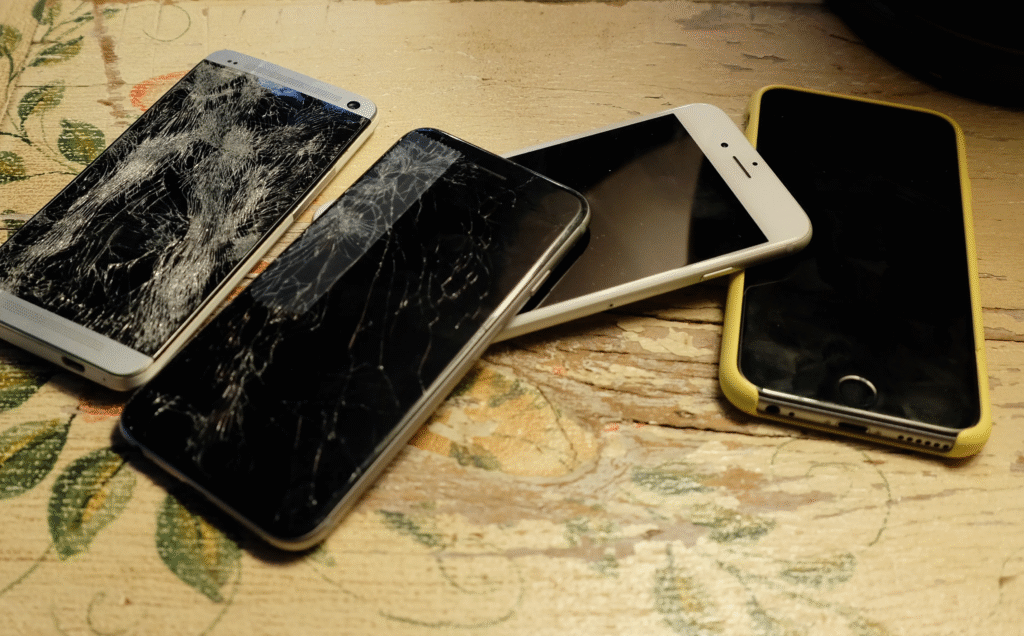In today’s digital world, smartphones are no longer just communication tools. They’re wallets, cameras, productivity hubs, and gateways to our entire digital lives. With the cost of high-end phones reaching over ₹1,00,000, it’s no surprise that many consumers are turning to phone insurance as a way to protect their investment.
But is phone insurance truly necessary? What does it cover, and is it worth the price? Let’s explore the answers in depth.
Key Takeaways
- Phone insurance covers accidental damage, screen cracks, water exposure, theft, loss (premium plans), and even mechanical failures.
- Not all plans are the same—compare premiums, deductibles, claim limits, and exclusions before buying.
- Manufacturer and third-party providers offer varied benefits; choose based on service quality, budget, and risk tolerance.
- Most users find insurance valuable for high-end phones or if they’re accident-prone or travel frequently.
- Basic users or those with low-risk habits might save more by avoiding premiums and self-insuring.
- Always read the fine print—understanding claim procedures, coverage scope, and limitations is crucial.
- Timely reporting and proper documentation are essential for successful claims.
Understanding Phone Insurance
Phone insurance is a type of protection plan or policy that covers financial losses related to damage, theft, or malfunction of your mobile phone. Depending on the provider, it may come from your phone manufacturer (like AppleCare+), your mobile network carrier, or third-party companies like Asurion or Servify.
Phone insurance operates much like other types of insurance: you pay a monthly or annual premium, and in the event of an incident, the insurer either repairs or replaces your device—sometimes after deducting a service fee.
Why You Might Need It
With smartphones becoming more expensive and fragile, even a small drop can lead to a cracked screen costing thousands to fix. Water damage, theft, or accidental loss can cost you even more.
Here are a few reasons why people opt for phone insurance:
- Peace of mind: Knowing you’re covered reduces anxiety about costly repairs or replacements.
- High repair costs: Flagship phone repairs can exceed ₹15,000 to ₹30,000 for common issues.
- Frequent travel: Travelers face higher risks of damage, theft, or misplacement.
- Accident-prone users: Some people naturally drop, spill, or misplace things more often.
What Does Phone Insurance Cover?
Coverage varies by provider and policy type, but here are the most common inclusions:
Accidental Damage
This includes drops, cracks, and liquid damage. Whether you spilled coffee on your phone or dropped it while jogging, accidental damage is usually the primary reason people use phone insurance.
Screen Replacement
Cracked screens are the most common issue with smartphones. Most policies cover one or more screen repairs per year.
Theft
Some insurers offer theft coverage, replacing your device if it is stolen. However, you may need to file a police report and meet specific conditions.
Loss (Optional or Premium Plans)
Not all plans cover lost phones. If they do, this is often part of a higher-tier plan with a larger deductible.
Mechanical or Electrical Failure
If your phone stops working due to internal issues after the manufacturer’s warranty ends, some insurance policies continue the coverage.
Battery Replacement
As batteries degrade over time, some policies offer replacements if battery health falls below a certain threshold.
Worldwide Coverage
Premium plans may cover incidents occurring outside your home country—an advantage for international travelers.
What’s Usually Not Covered

Just like any insurance policy, there are exclusions. Be cautious of:
- Intentional damage: If the insurer suspects the damage was intentional or due to negligence.
- Unreported theft/loss: Most insurers require a police report within 24-48 hours.
- Third-party repairs: If you’ve previously repaired your phone at an unauthorized service center.
- Accessories: Chargers, headphones, or cases are typically not covered.
Types of Phone Insurance Providers
Let’s explore the different types of providers and what they typically offer:
Manufacturer Coverage (e.g., AppleCare+, Samsung Care+)
- Premium but seamless experience
- Certified parts and technicians
- May include theft/loss at extra cost
Carrier Insurance (e.g., Airtel Secure, Jio Device Care)
- Easy to bundle with your phone bill
- Typically includes loss and theft
- Repairs may take longer or vary in quality
Third-Party Insurers (e.g., OnsiteGo, OneAssist, Servify)
- Flexible plans with various levels of protection
- More affordable options
- Service levels vary
How to Make a Claim
Making a claim usually involves the following steps:
Report the incident (theft/loss) to the police and get a copy of the FIR.
Notify the insurer within a specified period—usually 24–72 hours.
Submit required documents, such as the purchase invoice, identity proof, and claim form.
Device pickup or drop is arranged for repairs or replacement.
Some insurers offer apps for a more seamles
Pros and Cons of Phone Insurance
Like any financial product, phone insurance has its advantages and disadvantages. Evaluating them helps you decide whether to buy a policy—or skip it.
Pros
Peace of Mind
No stress about expensive screen repairs or replacing your phone after a fall.
Convenient Repairs
Insurers often provide pick-up and drop service, plus tie-ups with certified technicians.
Affordable Premiums Compared to Device Price
Spending ₹300 per month to protect a ₹1 lakh phone is reasonable for many.
Global Coverage with Premium Plans
For frequent travelers, worldwide protection can be a lifesaver.
Protects Against Theft and Loss (if included)
Replacing a stolen or lost phone is incredibly costly without insurance.
Extension of Manufacturer Warranty
Some policies cover malfunctions even after your manufacturer warranty expires.
Cons
Deductibles Can Be High
Even after paying monthly premiums, you may still need to pay ₹2,000–₹8,000 for a claim.
Not All Damage Covered
Many policies don’t include intentional damage, cosmetic issues, or damage from unauthorized repairs.
Claim Rejections
If your documentation isn’t perfect or timelines aren’t met, claims may be rejected.
Recurring Costs
Insurance adds up. ₹300 per month is ₹3,600 a year—often more than the cost of a basic repair.
Limited Replacements per Year
Most plans cap the number of claims to 1–2 per year.
Cost Breakdown: Is It Really Worth It?
Let’s break it down using two real-world examples to see if phone insurance makes financial sense.
iPhone 14 Pro User (India)
- Phone cost: ₹1,30,000
- AppleCare+: ₹13,000/year
- Accidental screen damage repair without insurance: ₹27,000
- With insurance: ₹2,500 service fee
Result: If a user breaks their screen once per year, AppleCare+ saves about ₹11,500. Multiple incidents yield even more value.
Mid-range Android Phone User
- Phone cost: ₹25,000
- OneAssist Plan: ₹2,000/year
- Screen damage repair: ₹4,000–₹6,000
- With insurance: ₹500 deductible
When Should You Skip Phone Insurance?

Not everyone needs phone insurance. Here are a few situations where it may be better to skip it:
Older Devices: If your phone is over 2–3 years old, the repair costs may not justify the premium.
Tight Budget: If you rarely break or lose devices, you might save money by setting aside emergency funds.
Low-Risk Users: If you use a sturdy case, screen protector, and keep your phone indoors or at work most of the time, your risk of damage is low.
Access to Quick Repairs: Some users can get inexpensive, local repairs that may be more affordable than Insurance.
Also Read : Can Life Insurance Really Secure Your Loved Ones’ Future?
Conclusion
Smartphones have evolved into indispensable tools for both personal and professional life. As they become more essential—and expensive—phone insurance is no longer just a luxury but a smart financial shield against life’s unpredictable accidents.
Whether it’s a cracked screen, water damage, or even theft, a well-chosen insurance plan can save you thousands of rupees and countless hours of stress. However, not everyone needs phone insurance. If you’re a careful user or your phone is already budget-friendly, self-insuring might be the more economical choice.
In the end, the value of phone insurance depends on your lifestyle, habits, device value, and willingness to manage risk. But one thing is clear: in an age where phones are more powerful and fragile than ever, insurance offers peace of mind that’s hard to ignore.
FAQs
1. Is phone insurance really worth it for expensive smartphones?
Yes, for premium smartphones (₹50,000 and above), insurance is often worth it. Repairs like screen replacements or water damage can cost ₹10,000–₹30,000. A good insurance plan can significantly reduce or eliminate these out-of-pocket expenses.
2. What is the difference between a warranty and phone insurance?
A manufacturer’s warranty usually covers only hardware or software malfunctions due to manufacturing defects—typically for one year. Phone insurance goes beyond that to cover accidental damage, theft, loss, and sometimes even battery replacement.
3. Can I buy phone insurance after purchasing the phone?
Yes, but most insurers require you to buy insurance within 7–30 days of the phone’s purchase. Some may allow later enrollment but only after the phone passes a physical inspection or diagnostic test.
4. Does phone insurance cover theft and loss?
Not always. Basic plans typically cover accidental damage. Theft and loss are often included only in premium-tier plans or as add-ons. Always read the policy details to confirm coverage.
5. How many times can I claim insurance on my phone?
Most plans limit claims to 1–2 times per year. Once the limit is reached, you’ll either need to renew the policy or pay for repairs yourself.
6. What should I do immediately after damaging or losing my phone?
- For damage: Take photos and contact your insurer within 24–48 hours.
- For theft or loss: File a police report (FIR), notify your insurer, and block your SIM card.
- Collect all documents like the purchase invoice, claim form, and ID proof to submit your claim.
7. Can I transfer my phone insurance if I sell or gift the phone?
Some insurers allow transfer of coverage to the new owner, while others do not. It depends on the provider. Check the transfer policy in your plan’s terms and conditions or contact customer support for clarity.



